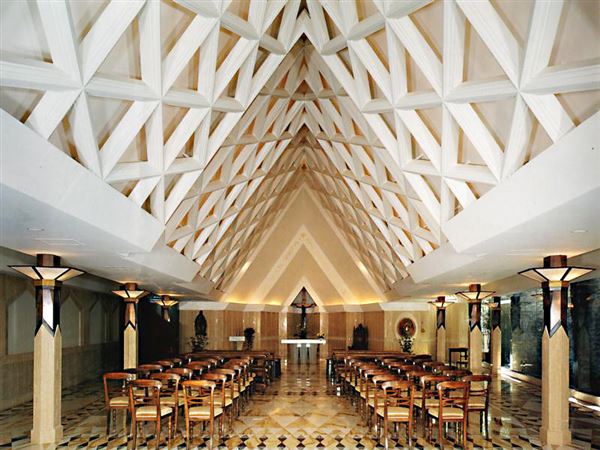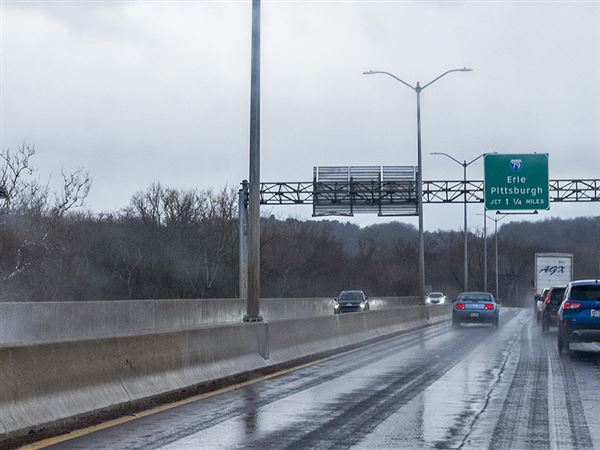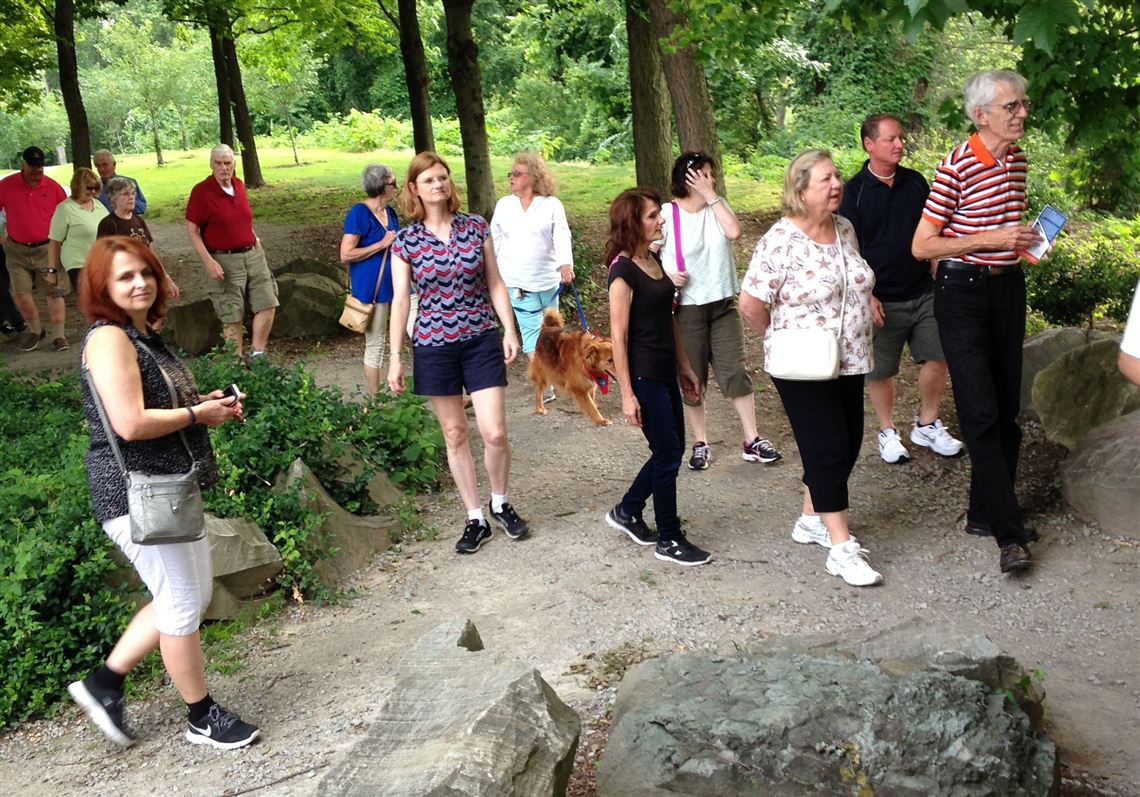One of the most intriguing of this city’s neighborhood designations is Washington’s Landing — nee Herr’s Island — as part of Troy Hill.
An island in the Allegheny River, it is bundled with its closest associate, partnership by proximity, but in fact the island has an old affiliation with Troy Hill. More than a century ago, the biannual Running of the Pigs spilled down Rialto Street, that ski run that poses as a city roadway, and across a wooden bridge to a slaughter yard on the island.
On a recent tour held by the Allegheny City Society, I savored the sun glinting through trees and the landscaping along a path, and I tried to imagine those earlier times — the filth, the stench, the din of a lumber mill, the squeals of doomed animals.
The only remnant of those days is the railroad. As our group spread out over the landscaped amphitheater near the tennis courts, a train chugged toward us on its elevated rails. The pop of tennis balls punctuated its quaint roar, and in the grass near our group a mama bunny straddled a tiny offspring that was nursing under her.
When the island was still farmland, in 1753, a 21-year-old George Washington slept there, probably freezing, after his raft capsized. He was a young surveyor then. Benjamin Herr, a Mennonite wheelwright, bought the island in 1797. He became its namesake before it was renamed Washington’s Landing in 1987.
The Urban Redevelopment Authority and the state began buying land in the late 1970s, and through the 1990s, the Rubinoff Co. and the state redeveloped the land. The first occupant was the Three Rivers Rowing Association in 1989. The Washington’s Landing Marina followed. In 1993, the Department of Environmental Protection moved its offices to the island.
When the village of town houses was completed in 1997, the first one sold for $129,000, former Mayor Tom Murphy told the group. (They are now selling for as high at $600,000.)
“We were begging people to live there,” he said.
The island had, after all, been a brownfield that had to be cleaned of many tens of thousands of tons of waste and made safe from polynuclear aromatic hydrocarbons and polychlorinated biphenyls. There were petroleum hydrocarbons from an old storage tank, ash, sand, slag and cinders.
“A bunch of us thought there was a better use,” Mr. Murphy said. “I remember people saying, ‘Nobody’s going to go there. The rats are as big as cats!’ “
The total investment in transforming Washington’s Landing was $44 million from federal, state and city sources.
As our group paraded past al fresco diners at Redfin Blues, past a line of tiki torches that gilded the waning sunlight, archivist and historian David Grinnell gathered everyone along a walkway near the town houses and related the story of how right where we were standing was where Emil Winter began making his fortune as the owner of the Winter and Dellenbach Abattoir. We were standing where animals had been slaughtered.
Just to the left is Jeff Leech and Sue Arnold’s beautiful condo of leafiness, flower boxes and patio lights. Mr. Leech was one of the first residents.
“I bought dirt” in anticipation of the development, he said. “I moved here from O’Hara. My kids had grown and I worked Downtown as an attorney.”
Mr. Murphy said the development “changed minds and changed lives,” as more people had shorter commutes to work in Downtown, some of them in kayaks.
Of all the parts of the North Side — Allegheny City before 1907 — this island “has probably changed more than any,” said John Canning of the Allegheny City Society.
It is hard to imagine change any greater than a 42-acre wasteland becoming what Washington’s Landing is today.
It’s one of those places I rarely visit, but every time I do, I wonder why I don’t visit more — to stand at the northern prow and watch kayaks on the river, to hear my sneakers crunch the gravel paths, to count the rabbits, to dine al fresco and to feel inspired, knowing the power we have, if we have the will, to reverse the truly awful things we do to our environment.
The Washington’s Landing Tour was the Allegheny City Society’s first of four scheduled through Aug. 10. All are free and begin at 6:15 p.m.
On July 13, the tour of Fineview begins at the observation deck on Catoma Street. July 27’s tour, of the Upper Woods Run Valley, begins at 1441 Woods Run Ave. And on Aug. 10, the group will tour the North Shore, meeting in the sculpture park along the river between the Clemente and Warhol bridges. The Buhl Foundation and IOBY (In Our Back Yards), a crowdsourcing organization, provide funding for the tours.
Diana Nelson Jones: djones@post-gazette.com or 412-263-1626.
First Published: June 26, 2017, 4:00 a.m.
















